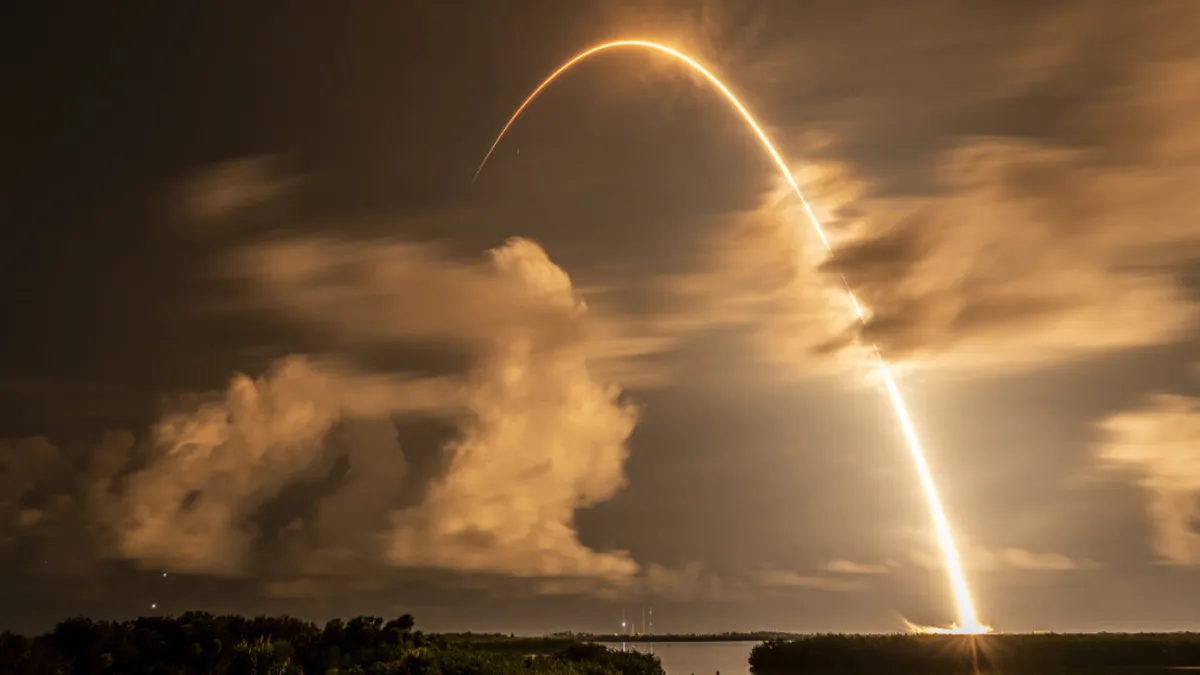
As SpaceX's Starship vehicle continues to capture headlines, the company's reliable Falcon 9 rocket is quietly achieving impressive milestones. These accomplishments took place during relatively low-profile launches of Starlink satellites, yet they highlight the significance of first-stage reuse—a concept that SpaceX has pioneered over the past decade.
The first notable milestone occurred on Wednesday morning with the successful launch of the Starlink 10-56 mission from Cape Canaveral, Florida. The first stage of this rocket, known as Booster 1096, completed its second launch and successfully landed on the Just Read the Instructions drone ship. Remarkably, this marked the 400th successful drone ship landing for SpaceX, showcasing the company's dedication to rocket reusability.
Less than 24 hours later, another Falcon 9 rocket lifted off the pad at Kennedy Space Center, launching the Starlink 10-11 mission. This time, the first stage, Booster 1067, returned safely and landed on a different drone ship, named A Shortfall of Gravitas. This particular booster has had a distinguished career since its debut in June 2021, having participated in various missions, including sending two Crew Dragon vehicles to the International Space Station and launching several Galileo satellites for the European Union. Notably, this flight marked the 30th for Booster 1067, making it the first Falcon 9 booster to reach such a level of experience.
These significant milestones come a decade after SpaceX started achieving success with first-stage reuse. The journey began in September 2013, when the company executed the first controlled entry of the Falcon 9 rocket's first stage during the inaugural flight of version 1.1. This groundbreaking achievement validated the concept of supersonic retropropulsion, which had previously existed only in theory.
Supersonic retropropulsion involves igniting the rocket's nine Merlin engines while traveling faster than the speed of sound through the upper atmosphere, where external temperatures can exceed 1,000 degrees Fahrenheit. According to Tom Mueller, the company's former chief of propulsion, the initial success seemed improbable. He vividly recalled watching the launch from Vandenberg Space Force Base in California, tracking the rocket's reentry via a camera on Elon Musk's private jet. “I remember watching the live video and seeing the light of the engine on the ocean, and holy shit, it was there,” Mueller stated. “The rocket came down, landed in the ocean, and blew up. That was unreal.”
Despite the challenges, SpaceX continued to refine its technology and, by December 2015, successfully landed its first rocket on a Florida launch pad. The first drone ship landing followed in April 2016, and less than a year later, SpaceX achieved its first reflight of a Falcon 9 stage.
Despite its success, many industry experts were initially skeptical about SpaceX's approach to rocket reusability. In the mid-2010s, both the European and Japanese space agencies were pursuing next-generation rockets—Europe with the Ariane 6 and Japan with the H3—but opted for traditional, expendable designs rather than embracing reuse. Consequently, these competitors now lag about a decade behind SpaceX in launch technology. If the ambitious Starship rocket succeeds, this gap may widen even further.
In the United States, United Launch Alliance (ULA) has historically been SpaceX's primary competitor. Their initial reaction to SpaceX's reusable first-stage concept was dismissive. ULA engineers produced studies arguing that SpaceX's plans were impractical, promoting their own approach called SMART—Sensible Modular Autonomous Return Technology. This strategy suggested that separating only the engine section of the Vulcan rocket was superior, implying that SpaceX's booster flyback was a foolish endeavor.
According to ULA's analysis in 2015, the SMART approach would yield cost savings after just two launches, while SpaceX's model would require ten flights for similar benefits. Fast forward to today, and it's clear that SpaceX has not only proven its critics wrong but has also achieved the remarkable feat of flying the same rocket 30 times. The company is now approaching an annual launch cadence that rivals the total number of rockets launched by ULA in its 20-year existence. As for the SMART concept, it remains a theoretical idea without tangible implementation.